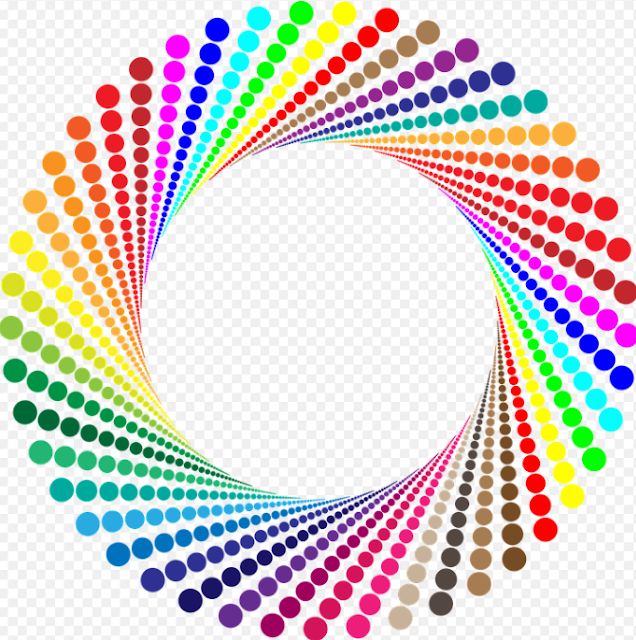PRIMARY COLORS
The primary colors
Primary colors are sets of colors that can be combined to create a wide range of colors. Primary colors are those that cannot be created by mixing other colors in a given color space.
For the subtractive combination of colors, as in the mixture of pigments or colorants for printing, the primaries normally used are cyan, magenta, and yellow, although the set of red, yellow, blue is very popular among artists.
For the additive combination of colors, as in the superimposition of projected lights or CRT screens, the primary colors normally used are red, green and blue.
The expression "primary colors" has its origin in the historical concept that yellow, red and blue, initially along with white and black, were the "simple", "primitive" or "primary" colors from which all others could be derived by mixing. The idea that painters can mix all but three colors dates back to Aristotle in his Meteorologica
YELLOW + BLUE = GREEN
BLUE + RED = PURPLE
RED + YELLOW = ORANGE
Biological Bases
Primary colors are not a fundamental property of light, but they are related to the eye's physiological response to light (the way the eye works). For humans, three primary colors are generally used, since human color vision is trichromatic.
Fundamentally, light is a continuous spectrum of wavelengths that can be detected by the human eye, a stimulus space of infinite dimension. However, the human eye normally contains only three types of color receptors, called conic cells. Each color receptor responds to different ranges of the color spectrum. Humans and other species with three types of color receptors are known as trichromatic.
The primary additives are red, green and blue. Due to the response curves of the three different color receptors in the human eye, these colors are optimal in the sense that the largest range of colors, a range, visible by humans can be generated by mixing the light of these colors. The additive mixture of red and green light produces shades of yellow or orange. A mixture of green and blue produces shades of cyan, and a mixture of red and blue produces shades of purple and magenta. Mixing equal proportions of the primary additive results in shades of gray; When all three colors are completely saturated, the result is white. The color space that is generated is called the RGB Color Space ("red, green, blue").
Subtractive primers
Subtractive color mixing
Media that use reflected light and colorants to produce colors use the subtractive color method of mixing colors. In the printing industry, to produce different colors, apply the subtractive primers yellow, cyan, and magenta together in varying amounts. Subtractive color works best when the surface or paper is white or near white.
Mixing yellow and cyan produces shades of green; mixing yellow with magenta produces shades of red, and mixing magenta with cyan produces shades of blue. In theory, mixing equal amounts of the three pigments should produce shades of gray, resulting in black when all three are completely saturated, but in practice they tend to produce muddy brown colors. For this reason, a fourth "primary" pigment, black, is often used in addition to the colors cyan, magenta, and yellow.
The color space generated is the so-called CMYK color space. The abbreviation means "Cyan, Magenta, Yellow and Black" - K means "Kohle" (German for charcoal) and is used to represent black as "B" could be confused with "Blue".
In practice, mixtures of real materials such as paint tend to be less accurate. Brighter or more specific colors can be created by using natural pigments instead of mixing, and the natural properties of the pigments can interfere with the mixture. For example, mixing magenta and green in acrylic creates a dark cyan, something that would not happen if the mixing process were perfect.




Comentarios
Publicar un comentario